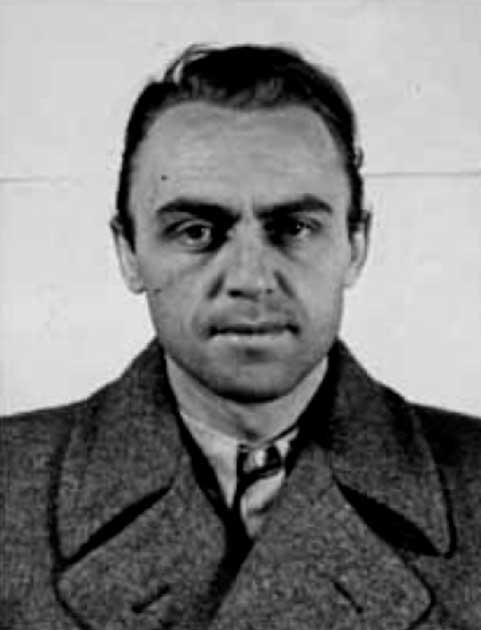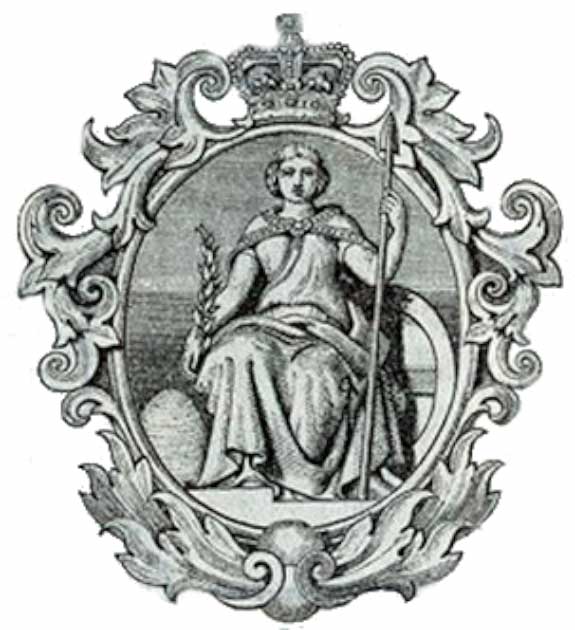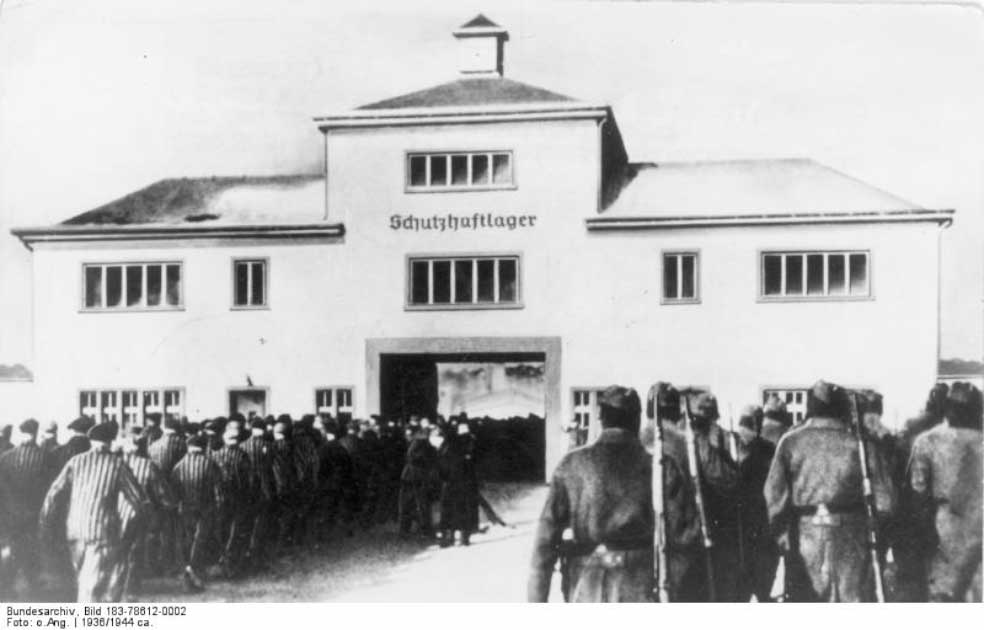There are lots of ways to win a war. Brute force is rarely the only, or best option. Early on in World War 2, the Nazis had discovered that their enemies were putting up a better fight than they had expected. A new plan was needed.
As the Nazis became more and more concerned about their chances they came up with increasingly bizarre plans. One of these plans was to bring a halt to the British war machine by attacking the economy that fueled it. The plan, dubbed Operation Bernhard, was to flood the British economy with counterfeit currency dropped from planes in the hopes that it would cause a massive economic collapse.
Origins of Operation Bernhard
It all began at a meeting on 18th September 1939. The head of the Reichskriminalpolizeiamt (Nazi Germany’s central criminal investigation department), Arthur Nebe, suggested a plan to utilize known counterfeiters to forge British currency. He suggested British notes could be mass-produced and then airdropped over Britain, causing a massive financial crash.
The plan received a mixed reception. Nebe’s boss, Reinhard Heydrich, liked the plan but wasn’t keen on using known criminals to forge the notes. Joseph Goebbels, the Nazi propaganda minister, wasn’t a fan either, calling it a “grotesque plan”.
The biggest detractor was Walther Funk, Germany’s Minister of Foreign Affairs, who feared the plan breached international law. This particular worry seems strange when one considers this was the same man who signed laws that not only handed over Jewish property to the state but also helped fund genocide.
Hitler, however, was a fan of the project. He happily gave final approval for the plan to proceed.
Three Stages
Operation Bernhard was originally monikered Operation Andreas. In 1940 a forgery unit was set up in Berlin. From the beginning, it was made clear that this was no simple forgery or counterfeiting operation. The goal was to create a perfect copy of the English currency, one so perfect not even the best experts could tell the difference.

The operation was headed by an SS major, Alfred Naujocks, and his technical director, Albert Langer. It was decided that their target would be the most widely circulated note, the £5 note.
They broke their task down into three stages. Stage one was to produce identical paper to that used by the British mint. Stage two was to prepare identical printing plates, and stage 3 was to copy the British serial numbering system.
These were no easy tasks. The men quickly realized that the British notes used rag paper which would need to be made by hand. Their first few attempts were however the wrong color.
They fixed this but then discovered their notes looked washed out under UV light. They realized this was due to the difference in the chemical composition of water in Germany and the UK that was used for making the paper and ink. Langer had to duplicate the chemical balance of British water to fix the issue.
The printing plates also turned out to be a pain. The German engravers tasked with creating the plates struggled with the vignette of Britannia. It took them seven months to make a passable likeness and even then modern experts state the eyes were wrong.
To break the serial numbering system German banking experts examined 20 years’ worth of currency records. Besides this, the Germans kept no records of how they broke the numbering system but it is likely cryptanalysis was used.

It was all more work than the Germans had expected. Naujocks left in 1940 after falling out with his boss, Heydrich. The project continued until 1942 but was then shut down.
It was claimed that by this point the unit had made £3 million worth of counterfeits, although modern historians put it at closer to £500,000. Most of the money made never saw the light of day, making the whole thing a bust.
Or so it seemed.
The Revival
However the plan still had supporters amongst the Nazi leadership, and Heinrich Himmler revived the plan in July 1942. It was clear by this point that producing enough notes to crash one of the world’s strongest economies was a pipe dream.
Himmler had a new plan: use the currency to pay for German intelligence operations. These were poorly funded, and the counterfeit money could be used to cover the gaps in his budget.
SS Major Bernhard Kruger took over the operation. He recovered what he could from the offices of the old operation Andreas and got to work. He was ordered to use Jewish prisoners from Nazi concentration camps as his workforce.
He set up business at camp Sachsenhausen and visited several other concentration camps to assemble his team of skilled Jews. By December of 1942, he had assembled a crew of just over 100 Jews who were skilled in the arts of engraving, draftsmanship, printing, and banking.
Bernhard reportedly treated these Jews relatively respectfully. They were provided with cigarettes, newspapers, extra rations, a radio, and even a table tennis table.
Production started in January 1943 but it took a year for production to catch up with the productivity of operation Andreas. It peaked between mid-1943 and mid-1944 during which 65,000 notes were being produced a month.
The operation was deemed a huge success. Nazi authorities were so pleased that twelve prisoners (including three Jews) were awarded medals for their efforts. In May 1944 it was ordered that the forgers turn their attention to producing dollars as well as pounds.
- The Nazi V-3 Cannon: Could this “Vengeance” Weapon Have Destroyed London?
- Buried Treasure? The Nazi Gold Train and Project Riese
American currency, however, was much harder to produce. This was fine by the prisoners. They realized that if they managed to fully reproduce the American dollar, their lives would no longer be of any use. They slowed down as much as they could. It has been suggested Bernhard, faced with the horror of what would happen to his workers when they finished, also overlooked these delays.

This is not to say Bernhard was necessarily a good man, and there was an element of self-preservation in his actions also. Just as the prisoners had realized their usefulness to the Nazis expired as soon as their job was complete, Bernhard knew the second the counterfeit dollar was completed he, too, would be shipped off to the front line.
The End of Operation Bernhard
As the allies approached in 1945 operation Bernhard ground to a halt. The equipment and prisoners were initially moved to the Mauthausen-Gusen concentration camp in Austria with the hopes of starting up again there. It never happened.
Instead, the prisoners were ordered to burn all the remaining money. Any that wasn’t burnt was put on trucks and dumped into the Toplitz and Grundsless lakes with the machinery. After this, the prisoners were sent to the Ebensee concentration camp.
The Nazi plan was typically brutal and monstrous. It was ordered that the prisoners be executed upon their arrival at the camp (a generous reward for their hard work). The prisoners were split into three groups and sent on their way.
The first two groups arrived swiftly but the third group was delayed by a truck breaking down. It took them 2 days to walk to the camp. It turns out this broken-down truck saved all of their lives.
By the time the third group had reached the camp, all of the guards had fled, fearing the approaching allied forces. As the order had been for all the prisoners to be executed together, the first two groups were there waiting for their late brothers in chains.
The following day American troops reached and liberated the camp, and the remaining few who had survived were rescued.
More Nazi Overrreach?
World War 2 was an awful, brutal and cruel war full of atrocities that the sane mind can barely comprehend. But it was also a really weird war full of strange, farfetched plans. Operation Bernhard was one of these.

Today the idea that a world currency could be crashed just by dropping notes from planes is beyond bizarre. What were people meant to spend all that money on during wartime rationing? Even worse it turns out the Brits were aware of the German plan as early as 1939 after a leak reached England via a Russian emigre.
Operation Bernhard is just another footnote in a long list of strange and awful things that were carried out in WW2. At least this one has a happy ending.
Top Image: One of the forged banknotes created during Operation Bernhard. Source: Unknown Author / Public Domain.